Elementary level Principal Erica McCray thought the first ever gathering of Riverwalk Academy’s student body was scheduled to celebrate the Rock Hill charter school students for high marks on their report cards. It turns out, students were there to celebrate her.
McCray won a national award Tuesday afternoon that’s billed as the “Oscars of Teaching” by the group that gives it, along with a $25,000 prize and a trip to Washington, D.C.
“We just don’t think educators get enough recognition and celebration,” said National Institute for Excellence in Teaching CEO Joshua Barnett, who presented McCray with a Milken Educator Award.
California philanthropist and education advocate Lowell Milken founded the Milken Educator Awards program in 1987. By the end of this school year it will have awarded more than $76 million in individual prizes and $146 million for its national network of teachers.
The program gives $25,000 awards meant primarily for early- to mid-career educators. Teachers, principals and specialists working in K-12 schools are eligible.
They become candidates through a confidential process that ends with a panel review of experts appointed by state education departments. Educators aren’t told they are candidates until surprise ceremonies reveal they’ve won.
“You can’t apply for this award,” Barnett said. “Your work has to speak so loud day after day that they hear about it across Riverwalk Academy, across the association, across the state and all the way across the nation, that we hear about it.”
McCray is one of 30 recipients nationwide this school year, and the only one from South Carolina. The state has had 65 recipients since it joined the Milken Educator Awards program in 1994.
North Carolina has 58 all-time winners, including Pittsboro Elementary School teacher Shane Henderson this year.
Principal focuses on Riverwalk students
McCray began teaching in 2008, and came to Riverwalk Academy when it opened in 2014. Riverwalk is a K-12 charter school that has nearly 800 students, and is part of the South Carolina Public Charter School District.
Her career started with preschool students and moved to lower grades. McCray developed a love for teaching students to read, working as a literacy coach before becoming elementary school principal.
“My love for the classroom, it never went away,” she said. “That is what drives me.”
Riverwalk Academy elementary students outperformed state proficiency averages in English language arts and math in recent testing, state Superintendent of Education Ellen Weaver said at the school assembly. Riverwalk nearly met an ambitious statewide reading mark goal too, she said.
“That doesn’t happen by accident,” Weaver said. “That starts with amazing teachers.”
The school consistently has had an annual teacher retention rate of 90% or higher. High expectations and support are key to creating thriving schools like Riverwalk, Weaver said. “We have to acknowledge that it is great principals that help build great school culture,” she said.
Importance of teaching professionals
McCray took a moment to collect herself, with her arm around sixth-grade son Caiden as students cheered in the church gym across the street from Riverwalk Academy. She also shared the news with daughter Caitlyn, who is a senior.
McCray hadn’t thought about who she would tell or how she’d spend the money, given she’d only found out about the award moments earlier. But she knew why she was there, and why she is so passionate about teaching students.
“I do it because I want to be able to make a difference,” McCray said. “I want to have a lasting impact.”
Teachers are some of the most important people in society, Barnett said. The $25,000 award is fitting to recognize professionals who don’t get Emmys, Nobel Prizes or other well-known awards to honor top performers, he said.
“We’re very quick to recognize excellence in other industries,” Barnett said. “Isn’t it strange that the one profession that supports and prepares all these other professions often is not as well recognized?”
A first-year public school teacher in South Carolina makes a minimum of $48,500 this year, though that amount can be higher based on school district and advanced degrees.
McCray offers a simple message for the thousands of teachers across the region who do the best they can for their students, but are unlikely to get a day like she did on Tuesday.
“Keep doing what you do,” McCray said. “Someone is noticing it. They may not say it, but what you are doing matters.”

 803.466.6076
803.466.6076




 Service Areas
Service Areas























